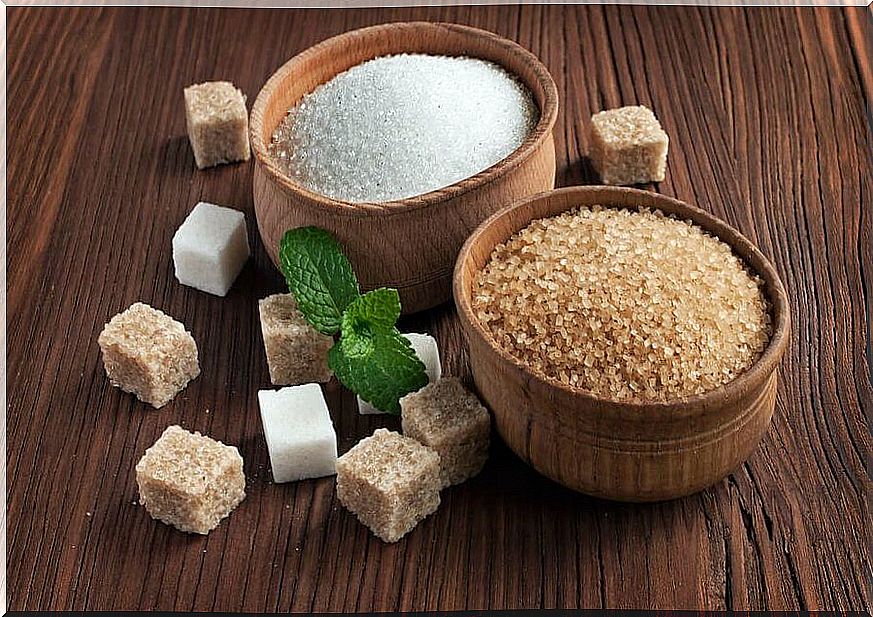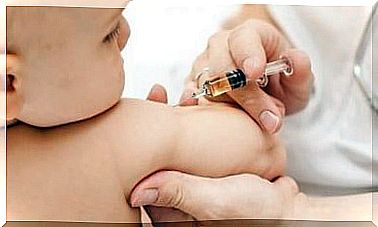Sucrose Intolerance In Children

Sucrose intolerance is an atypical disease that in children can be difficult to diagnose, as it has symptoms similar to other conditions. With a good treatment, it will be possible to overcome it in months or a few years.
What is sucrose intolerance?
Sucrose, common or table sugar, is the combination of a glucose molecule and a fructose molecule. The first is present in fruits and the second comes from cane. Because of these two molecules or monosaccharides – which are the smallest components in the group of carbohydrates – the child is called a disaccharide.

The enzyme is produced in the small intestine and is responsible for separating the two molecules that make up sugar. This process occurs in the stomach and prevents sucrose from fermenting. When the enzyme is absent, the sugar passes almost intact to the large intestine and colon, where it can stimulate the growth of candida bacteria.
Also, sucrose promotes the formation of stomach gas. The presence of sugar in the stool is an indication that the condition is latent. Sucrose intolerance should not be confused with food allergy. The first is related to the absence of enzymes and the second is activated through the immune system.
The first foods
The origin of this disease is genetic. Its manifestations begin the moment you start the intake of milk formulas in which sugar is present. Porridge and other foods at an early age can show that the baby lacks the necessary enzymes to metabolize sugars.
If enzymes are present, even if they are few, there may be a tolerance to limited doses of sugar. The doctor will be able to detect the amount of enzymes to prevent the intake of sucrose from exceeding the limits allowed in each case.
Symptoms of sucrose intolerance
Symptoms caused by poor digestion of sugars can begin about 30 minutes after eating the food. Cramps and abdominal pain, diarrhea, gastric distention or bloating and general discomfort can affect the child.
Vomiting, gas or flatulence, constipation, nausea, headache and hypoglycemia may also appear. Anxiety, nervousness, tachycardias and arrhythmias are also symptoms of sucrose intolerance.
If there is no timely treatment, the condition can lead to dehydration, loss of micronutrients, weight, and even malnutrition. This supposes a delay in development that can lead to anemia, fatigue and nutritional deficit in adulthood.
Sucrose intolerance or something else?
It is a rare disease whose symptoms are often associated with other conditions. Lactose intolerance is one of them, but in this case it is the absence of lactase. This enzyme is also produced in the small intestine and is responsible for metabolizing the sugar in milk; it is not usually serious.
Symptoms of sucrose intolerance can be confused with Celiac Disease. Gluten is a protein present in cereals such as barley, wheat, oats, rye, kamut, spelled or triticale. Consuming gluten generates in those who are intolerant an autoimmune response that causes inflammation and deterioration of the mucosa of the small intestine. Its consequences can be more serious.

To detect that we are facing an intolerance to sucrose in children, it will be necessary to resort to special tests. The Expired Hydrogen test, which allows us to measure this compound in the air we breathe, is one of them.
A daily analysis of the reactions to the consumption of certain foods will also help to detect the presence of this condition. Tests such as breathalyzer, genetics, or tissue biopsies are alternatives, as are blood, urine, and stool tests.
How to correct it?
Once the presence of the disease is detected, correcting it is closely linked to the daily diet. The medical indications suppress the consumption of the food that causes the intolerance. Other doctors reduce this type of food to the minimum necessary to evaluate the behavior of the organism; in most cases, relief is quick.
Sucrose intolerance can be overcome in months or a few years if the specialist’s instructions are followed to the letter.










